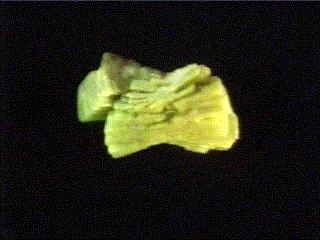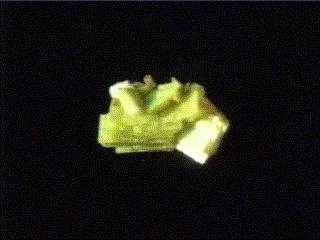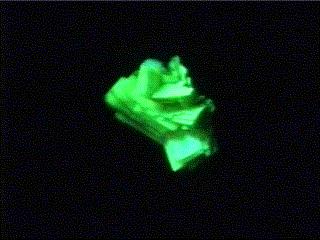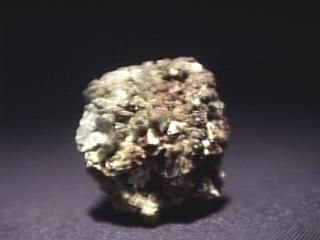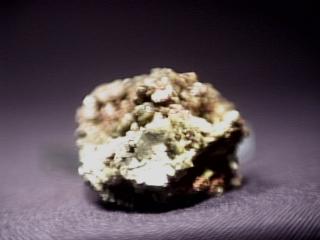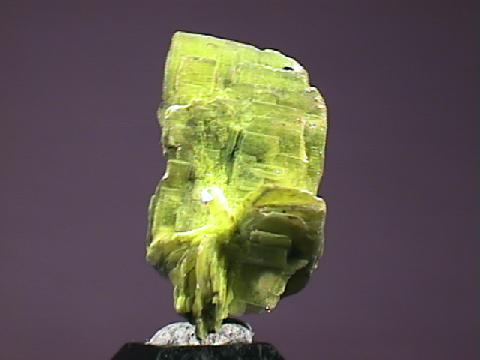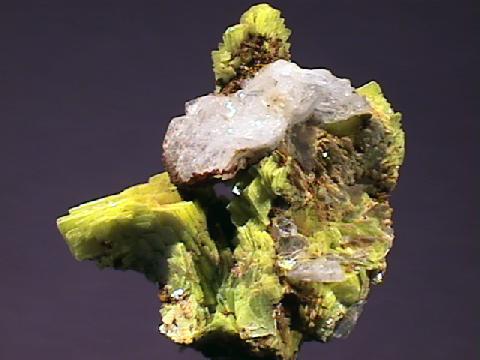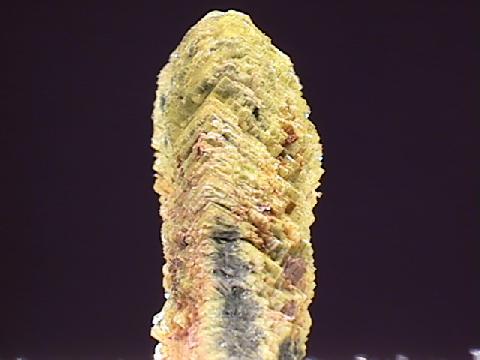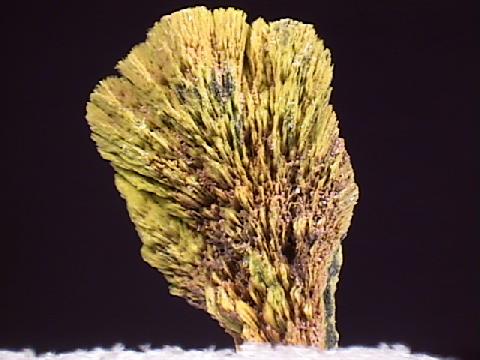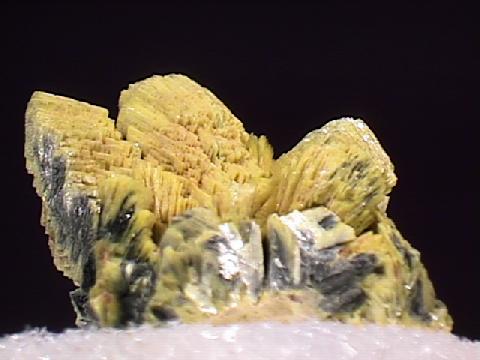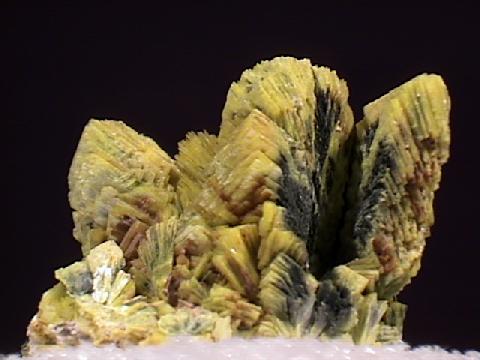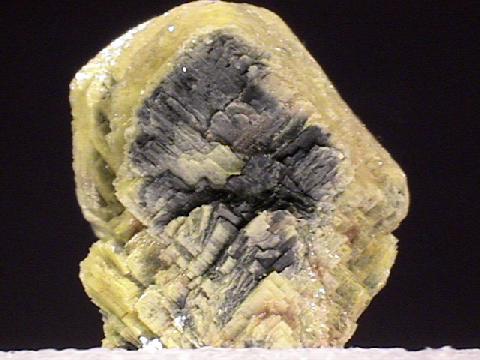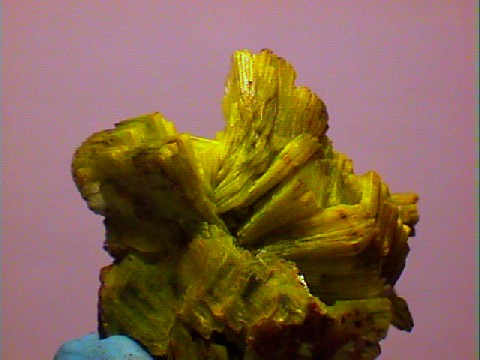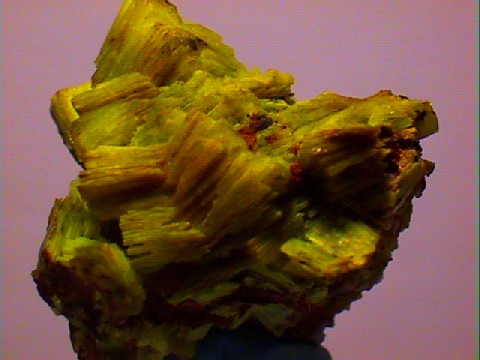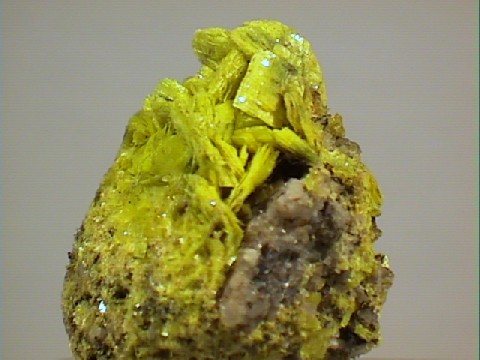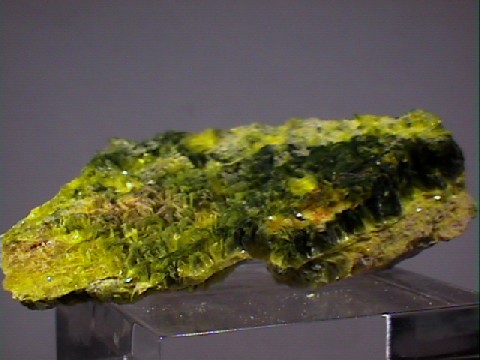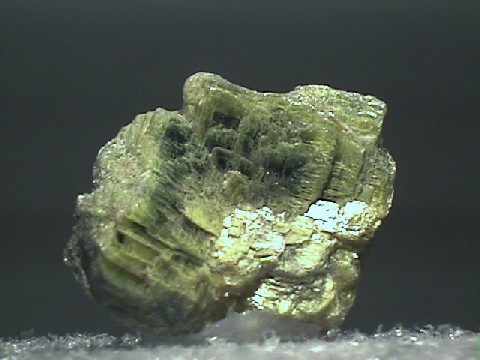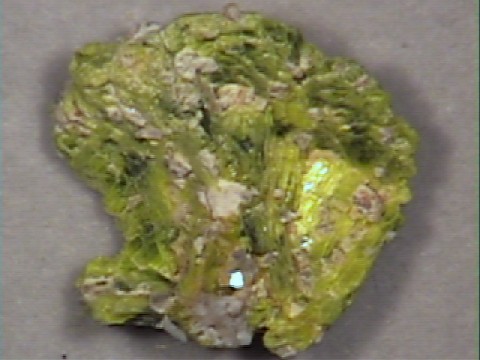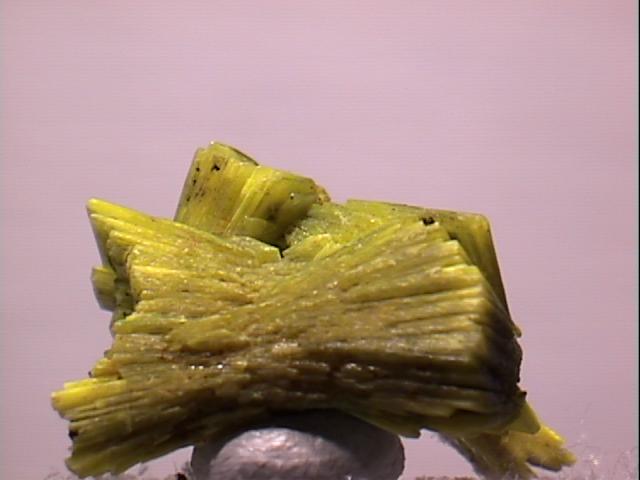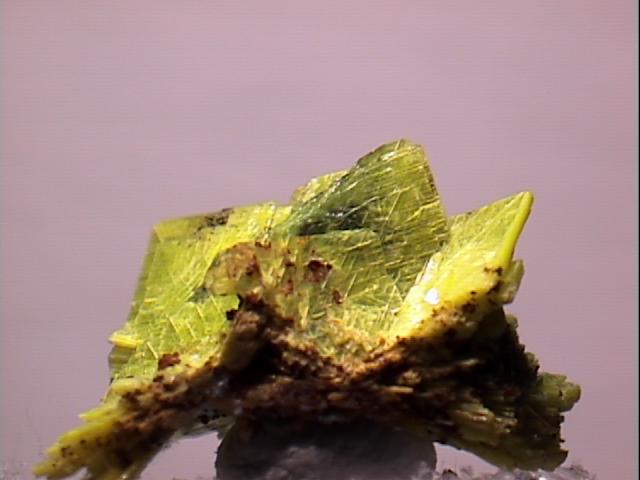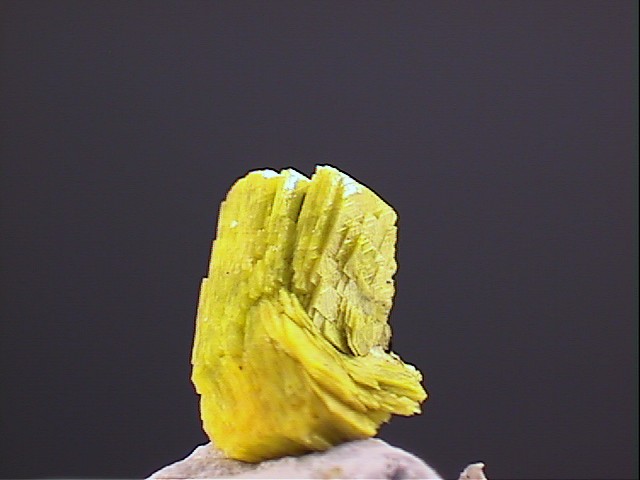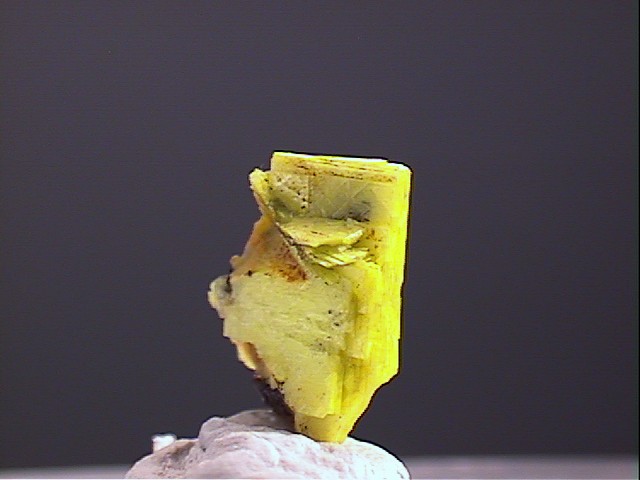 The Mineral
AUTUNITE
The Mineral
AUTUNITE
 (under longwave UV light)
(under longwave UV light)
The structure is composed of phosphate tetrahedrons linked to uranium-oxygen groups that form distorted octahedrons. The phosphates and uranium groups lie in sheets that are weakly held together by water molecules. This structure produces the tabular habit, the one perfect direction of cleavage, and the relative softness.
Autunite can lose water and convert to a different mineral called meta-autunite-I of the meta-autunite/meta-torbernite group of minerals and with heating can produce a meta-autunite-II mineral. Oddly, neither mineral is found in nature in any appreciable abundance. However, the conversion is irreversible and ongoing, and all collection specimens of a certain age are at least partially converted. Eventually after many years the meta-autunite will powder, and the specimen will be ruined. Fine autunite specimens should be stored in a closed container to avoid water loss. Some drastic measures have been attempted on fine museum quality specimens to thwart the conversion to meta-autunite, including lacquering. Remember, this is also a radioactive mineral and should be stored away from other minerals that are affected by radioactivity, and human exposure should be limited.
PHYSICAL CHARACTERISTICS:
- Colors are various shades of dark green to bright "lemon" yellow, often with a mixture of yellow and green shades in one specimen.
- Luster is vitreous to pearly on the main pinacoid.
- Transparency crystals are translucent to opaque.
- Crystal System is tetragonal; 4/m 2/m 2/m
- Crystal Habits include tabular square crystals dominated by two pinacoid faces. Crystals are often in parallel growths that can have a "fanned-out" look or in rosetta clusters. Also as crusts, earthy masses, foliated and scaly aggregates.
- Cleavage is perfect in one direction.
- Fracture is uneven.
- Hardness is 2 - 2.5
- Specific Gravity is approximately 3.1 - 3.2 (slightly above average for translucent minerals)
- Streak is yellow.
- Associated Minerals are torbernite, meta-torbernite, uranocircite, uranophane, uraninite and other uranium minerals.
- Other Characteristics: fluorescent yellow-green, radioactive, somewhat pleochroic and thin crystals or cleavage sheets are bendable.
- Notable Occurences include Autun, France; Cornwall, England; Mitchell Co., North Carolina and Mt. Spokane, Washington, USA; Zaire; Bergen, Germany and Portugal.
- Best Field Indicators are color, crystal habit, fluorescence, radioactivity, associations and flexible crystals.

